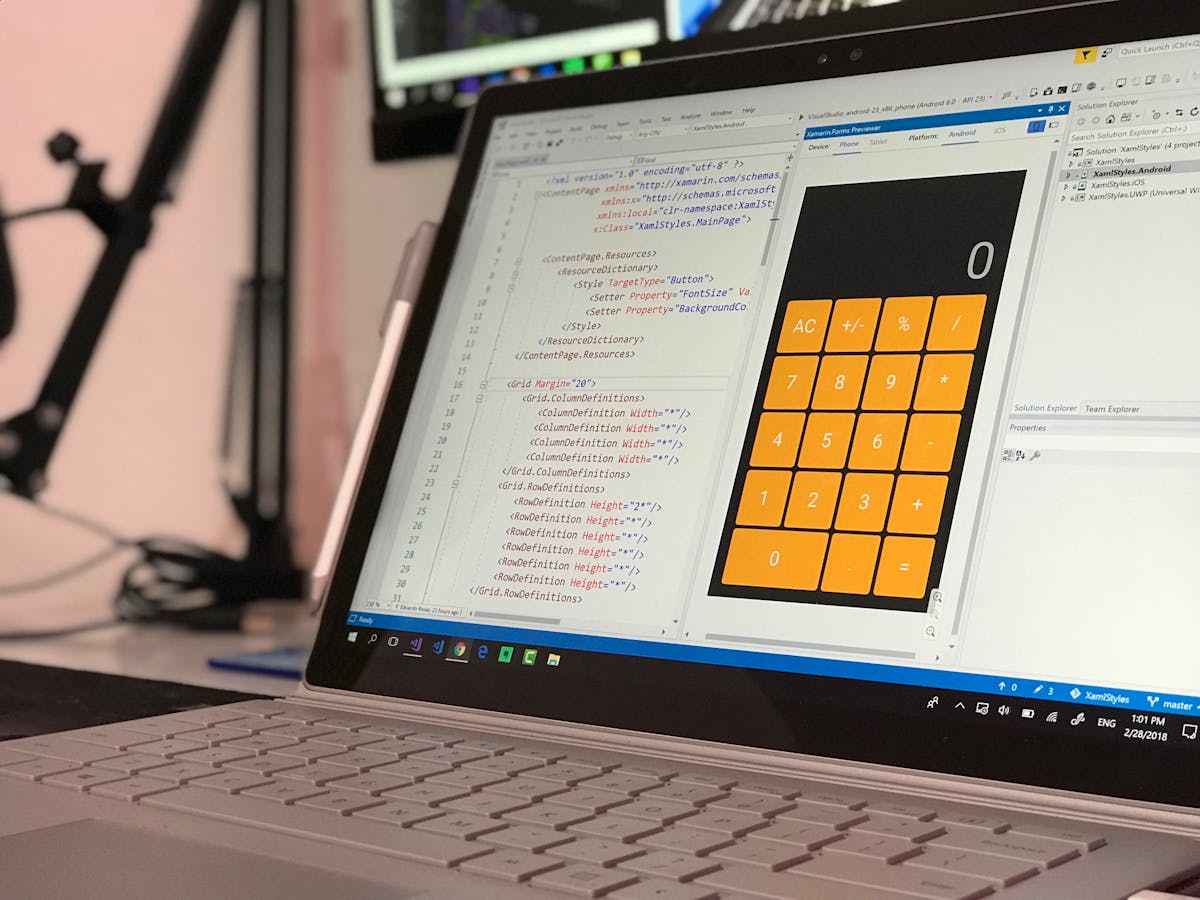Everything About Full-Stack Advancement: Discovering Its Function in Effective Software Application Design
Full-stack advancement has emerged as a keystone of modern software program engineering. By incorporating front-end and back-end technologies, it develops cohesive internet applications. This approach not only boosts interface but also reinforces server-side functionality. As the demand for adaptable designers rises, recognizing the subtleties of full-stack advancement becomes important. Exactly what does this include, and what ramifications does it hold for the future of software application engineering?
Recognizing Full-Stack Growth
Full-stack development incorporates the total spectrum of web development, incorporating both front-end and back-end innovations. This multidisciplinary strategy allows programmers to develop completely functional web applications, managing everything from customer interface layout to server management. Full-stack designers possess a wide-ranging capability, enabling them to browse various layers of an application, including data sources, server-side reasoning, and client-side interactions.Understanding the full-stack growth process involves recognizing the value of customer experience and application performance. Designers have to consider exactly how these elements communicate, guaranteeing a smooth experience for users. Additionally, full-stack development fosters partnership among teams, as programmers can connect effectively throughout disciplines. niels denekamp. This flexibility not only streamlines process but additionally improves analytical abilities. In a progressively digital world, the need for full-stack programmers remains to grow, highlighting their critical function in the software program engineering landscape
Secret Technologies in Full-Stack Development
The landscape of full-stack growth is defined by a selection of essential technologies that encourage programmers to build robust web applications. On the front end, prominent structures like React, Angular, and Vue.js facilitate the creation of dynamic customer interfaces. These devices permit developers to boost and produce responsive layouts user experiences.On the backside, Node.js, Django, and Ruby on Rails are extensively made use of for server-side advancement, enabling effective handling of database interactions and web server logic. Databases such as MongoDB and PostgreSQL are important for information storage and retrieval.APIs are important in linking the front end and back end, allowing smooth data exchange. Additionally, variation control systems like Git are crucial for handling code changes and cooperation among growth teams. Collectively, these modern technologies develop a comprehensive toolkit that enables full-stack programmers to provide top quality applications efficiently.
Advantages of Being a Full-Stack Designer
A job as a full-stack designer uses numerous advantages that attract both amateurs and seasoned specialists. One significant advantage is the versatility to deal with both front-end and back-end modern technologies, allowing developers to create comprehensive services. This twin ability improves analytic capabilities, enabling them to attend to concerns across the entire pile efficiently.Additionally, full-stack programmers commonly appreciate greater task possibilities, as their varied skills make them important properties to companies seeking to enhance growth processes. The ability to comprehend and handle whole projects promotes boosted collaboration within groups, leading to an extra natural workflow.Moreover, full-stack developers have a tendency to regulate greater incomes as a result of their comprehensive know-how. Continual understanding is another perk, as they often involve with numerous technologies and frameworks, keeping their skills appropriate. Eventually, the duty of a full-stack programmer is fulfilling and vibrant, supplying a meeting career path for those that welcome it.
The Full-Stack Development Refine
While navigating through the full-stack development process, programmers engage in a series of organized stages that guarantee the creation of durable applications. Initially, needs event is important, as it lays the foundation for understanding user demands and job objectives. This is adhered to deliberately the application architecture, where the total structure, technologies, and structures are selected to meet the requirements.Next, developers change to the front-end and back-end advancement stages, where they produce customer interfaces and server-side logic, respectively. Examining is an important phase that confirms safety, performance, and performance, dealing with potential bugs and problems prior to deployment.Finally, the release stage entails launching the application and monitoring its performance in an online setting. Throughout this iteration, process and comments loopholes are important, permitting constant renovation and adaptation Going Here to changing needs. This structured strategy helps with the advancement of efficient, scalable, and maintainable applications.

Collaboration Between Front-End and Back-End Teams
Reliable partnership in between front-end and back-end groups is vital for successful full-stack growth. Strong interaction, making use of shared tools and technologies, and agile partnership practices can substantially improve workflow and job results - niels denekamp aether. By cultivating a natural working relationship, groups can better straighten their initiatives and provide a seamless user experience
Relevance of Interaction
Effective partnership in between front-end and back-end teams depends upon regular and clear interaction. This communication is crucial for aligning job expectations, goals, and timelines. When front-end programmers understand the back-end design and the other way around, they can create much more natural and useful applications. Routine conferences and updates help with the exchange of concepts, permitting teams to resolve prospective problems early in the advancement procedure. In addition, effective interaction cultivates a collaborative setting, encouraging staff member to share insights and comments, inevitably resulting in cutting-edge solutions. By prioritizing communication, groups can minimize misunderstandings, simplify workflows, and improve overall efficiency. Subsequently, the role of communication in full-stack advancement can not be overemphasized; it works as the foundation of effective software design tasks.
Shared Equipments and Technologies
Clear communication establishes the phase for using shared devices and innovations successfully in full-stack advancement. This partnership between front-end and back-end groups depends upon the adoption of integrated devices that simplify operations and boost productivity. Version control systems, such as Git, assist in seamless collaboration by enabling designers to track adjustments and merge code successfully. APIs offer as a crucial bridge, making it possible for front-end and back-end components to connect successfully. Furthermore, common growth environments, like Docker, foster uniformity, permitting groups to operate in a consistent configuration. By leveraging these shared devices, teams can lessen misconceptions and accelerate the growth process, inevitably resulting in even more cohesive software application solutions that satisfy project demands and customer assumptions.
Agile Collaboration Practices

Typical Difficulties in Full-Stack Advancement
What challenges do full-stack developers come across as they browse the complexities of both front-end and back-end innovations? One prominent challenge is the quick development of structures and tools, which calls for continuous learning and adaptation. Programmers have to stay updated with both front-end libraries, such as React or Angular, and back-end modern technologies like Node.js or Django, which can result in skill voids or knowledge overload.Additionally, full-stack designers usually battle with workload monitoring because of the extensive series of obligations. Balancing jobs in between interface style, server-side reasoning, and data source monitoring can lead to time restraints and task delays.Collaboration and communication within teams also present obstacles, as full-stack designers have to link the gap between front-end and back-end teams, making sure positioning on task objectives. Debugging throughout numerous layers of the stack can complicate issue resolution, taking in beneficial time and resources.
The Future of Full-Stack Advancement
Technology in innovation guarantees to shape the future of full-stack advancement considerably. As firms increasingly adopt cloud computing and microservices styles, the demand for full-stack designers who can perfectly integrate front-end and back-end modern technologies is anticipated to expand. The rise of artificial knowledge and device learning will likely affect advancement practices, enabling extra effective coding and automated testing processes.Moreover, the emergence of no-code and low-code platforms may redefine the role of full-stack programmers, enabling them to concentrate on higher-level style and architecture while simplifying routine jobs (niels denekamp dubai). This shift could promote cooperation in between technological and non-technical group participants, expanding the extent of full-stack development.Additionally, the focus on cybersecurity will result in the assimilation of protection practices within the full-stack advancement lifecycle. Generally, the future of full-stack advancement appears intense, defined by continual understanding and adaptation to an ever-changing technological landscape
Regularly Asked Questions
What Educational History Is Preferred for Full-Stack Developers?
The recommended instructional background for full-stack developers typically includes degrees in computer science or software program design. Many effective programmers likewise emerge from coding bootcamps or self-taught experiences, emphasizing practical abilities over official education.
How Do Full-Stack Programmers Keep Updated With New Technologies?
Full-stack programmers stay upgraded with new technologies via constant knowing via on-line programs, attending seminars and workshops, engaging in area online forums, following sector blogs, and experimenting with new devices and structures in personal projects.
Is Full-Stack Growth Suitable for Beginners?
Full-stack advancement can be appropriate for beginners, as it supplies a considerable understanding of both front-end and back-end modern technologies. The discovering contour may be high, requiring commitment and regular method to grasp various abilities.
What Are Common Job Paths for Full-Stack Developers?
Typical occupation paths for full-stack programmers consist of duties such as software program designer, internet developer, technological lead, and project supervisor. Many also focus on certain modern technologies or move into relevant areas like item administration or individual experience design.
Exactly How Does Full-Stack Development Differ From Standard Software Program Development?
Full-stack development includes both front-end and back-end jobs, allowing programmers to manage entire tasks. On the other hand, typical software application development commonly includes specific functions, concentrating independently on either client-side or server-side aspects of applications. Full-stack advancement incorporates the full spectrum of web growth, integrating both front-end and back-end innovations. Full-stack developers have a considerable skill set, allowing them to browse various layers of an application, consisting of databases, server-side logic, and client-side interactions.Understanding the full-stack growth process includes recognizing the importance of customer experience and application performance. Additionally, full-stack look at here now development fosters collaboration amongst groups, as designers can communicate properly across self-controls. The landscape of full-stack development is specified by a variety of key modern technologies that empower developers to develop robust internet applications. While navigating via the full-stack development process, programmers engage in a collection of structured stages that ensure the creation of durable applications.